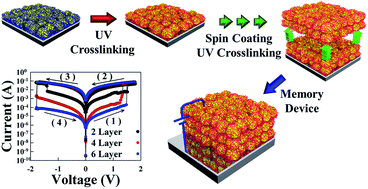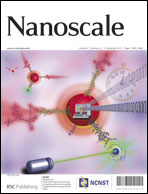Inorganic nanoparticle multilayers using photo-crosslinking layer-by-layer assembly and their applications in nonvolatile memory devices
Abstract
We introduce a general and facile method for the preparation of organic/inorganic nanoparticle (NP) nanocomposite multilayer films that allows vertical growth of various NP layers (i.e., metal or transition metal oxide NPs) in a densely packed structure. Our approach is based on the successive photo-crosslinking layer-by-layer (LbL) assembly between hydrophobic ligands onto a NP surface and photoinitiator (PI) molecules. Therefore, our approach requires neither the additional surface modification needed for well-defined NPs synthesized in organic media nor the deposition step that inserts a polymer layer bridge between adjacent inorganic NP layers in the preparation of traditional LbL-assembled NP films. We also demonstrate that photo-crosslinking LbL-assembled (metal oxide NP)n films could be used as a nonvolatile memory layer without a high-temperature thermal treatment, unlike conventional vacuum-deposition- or sol–gel-derived memory devices, which require thermal treatments at temperatures greater than 200 °C. This robust method could open a facile route for the design of functional NP-based electronic devices.


 Please wait while we load your content...
Please wait while we load your content...